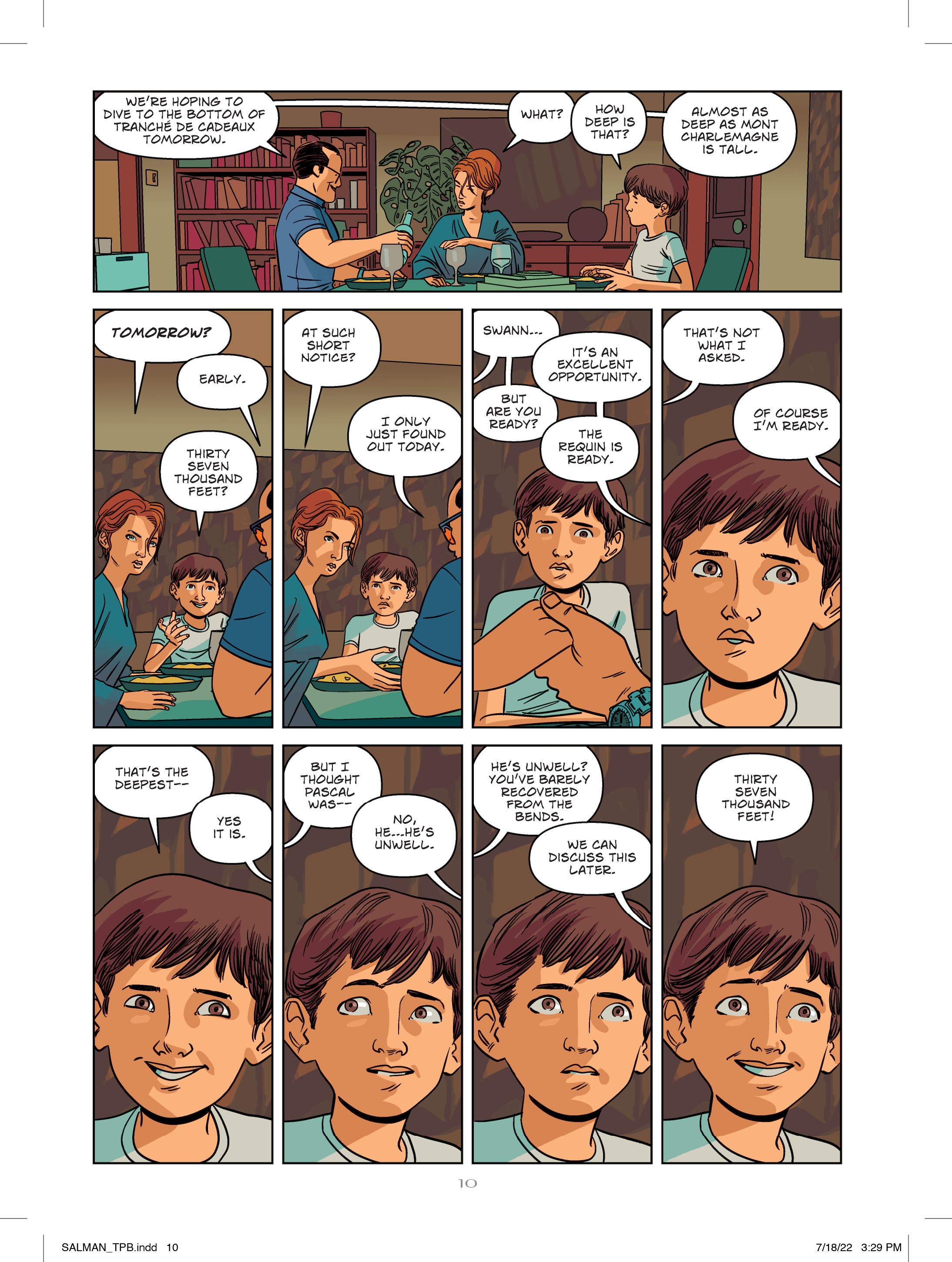How do you grieve in a land where art is forbidden? That’s the fascinating question at the heart of Tales From the Umbrella Academy writer I.N.J. Culbard’s new graphic novel, the latest release from Karen Berger’s comics imprint at Dark Horse — and Gizmodo has a sumptuous look inside.
Salamandre follows Kasper, its titular hero, a young artist in the wake of a tragic loss. Choosing to go and live with his grandfather, Kasper ventures to the land behind the Iron Veil — a kingdom ruled with an iron fist that outlaws flowers, music, and the act of art itself. As Kasper turns his artistic talents inwards to process his loss, he finds himself entering a world of revolution and spycraft, an underground resistance where artists fight back against the Emperor’s sinister secret police to liberate their creative work.
“This has been a story that I have been wanting to find a way to tap into, but had, for a long time, never really found a way to do that, until now,” Culbard said in an email to Gizmodo. “I wanted to take elements of my own childhood and write what I know, but my memories, like a lot of people’s memories, are fragmented and unreliable. Couple that with coming from a family where there were so many secrets, I could only ever be my own unreliable narrator. So I leaned into the way a story changes with each telling, the way we embellish, the way we confabulate because at the heart of all that is a true story. This is a story about a young boy who loses his father and in turn loses himself in his grief and is sent to stay with his grandfather in a country which has lost its freedom of expression to a totalitarian regime. It draws on my experiences growing up on both sides of the Iron Curtain during the Cold War.”
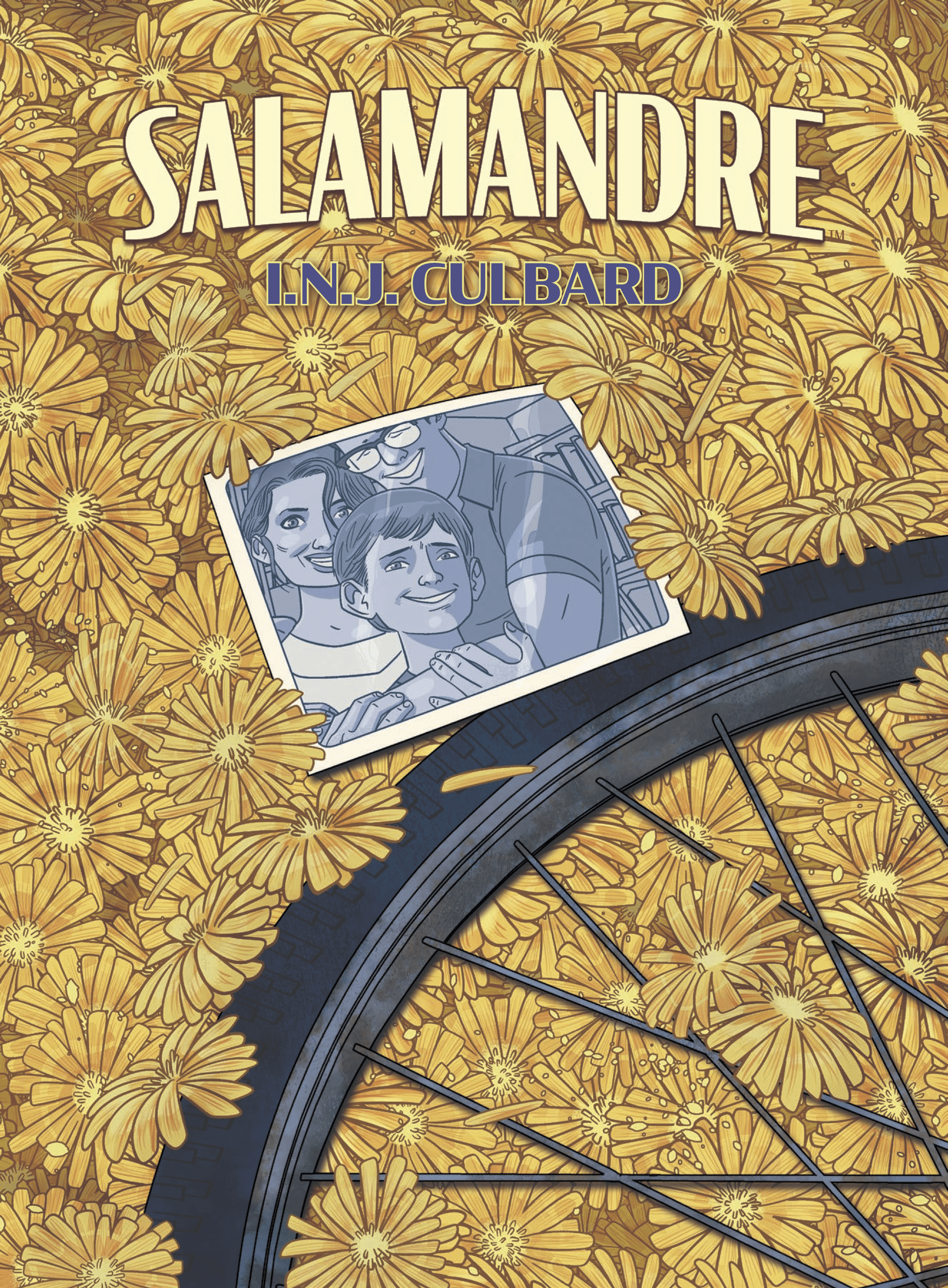
“I spent all my summers as a child, right up into my late teens, travelling to Poland. Sometimes I’d fly, sometimes I’d travel by coach, and sometimes I’d travel by train. Often I would travel alone,” Culbard continued. “There were times I’d be stood on the platform of a ghost station in Berlin at midnight surrounded by border officials with guns and barking dogs while our couchette was searched before we were allowed back on the train and on our way. And there were times when I would attend Solidarity rallies in Poland with family who were members of that movement.”
“There were a lot of experiences I could draw from but what I didn’t want to do was make it a story specifically about that time and place. Recollection is an act of imagination, whether something we are recounting happened or not. I didn’t really want to talk about how things were in a matter of fact manner because when we create art it’s not how something is, it’s how it feels, just as a memory is not how something was, it’s how something felt.”
Salamandre arrives on bookstore shelves November 15, after hitting comic book stores earlier this month. Click through to see a preview from the early parts of the graphic novel — alongside exclusive commentary on each page courtesy of I.N.J. Culbard!
Salamandre Page 5
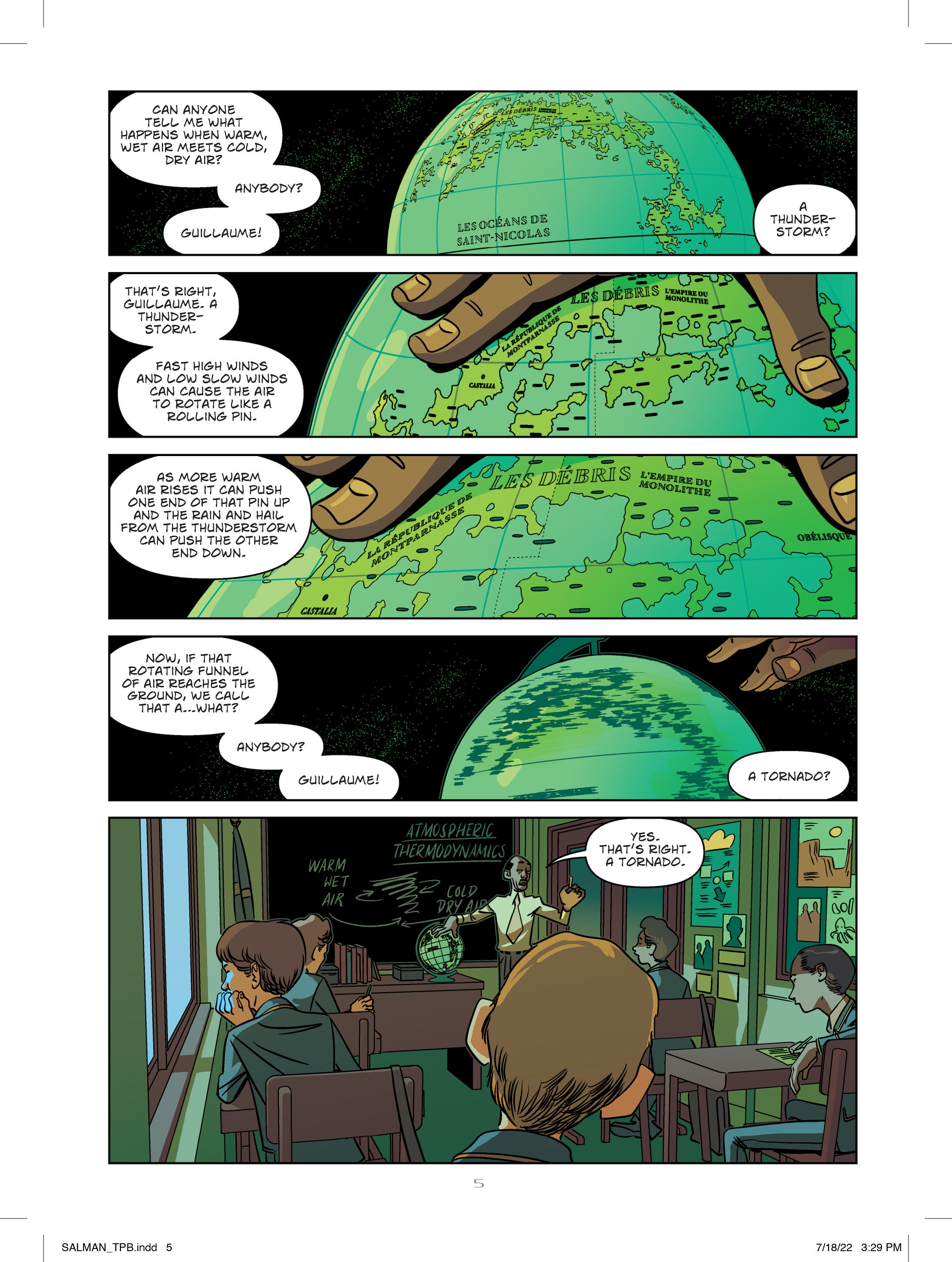
“We open on a visual cue that’s designed to give us a lot of information about the world our story is set in all in one go, and this is Kasper’s world, a world not completely unlike our own. The inspiration here is Ruritanian romances, a genre of stories set in a fictional Central/Eastern European country. Ruritania was a fictional country in Anthony Hope’s The Prisoner of Zenda. There are lots of examples of this genre, not least of all Tintin’s Syldavia which featured in King Ottakar’s Sceptre, and Latveria, home of Marvel Comics’ Victor Von Doom. Everything about this version of Europe had to be familiar, as if this were a misremembered world. The past is a foreign country, they do things differently there.”
“I grew up speaking two languages (English and Polish) and I wanted to convey a sense of that bilingualism. French was an obvious choice since English speakers already have a fair bit of vocabulaire français and as Alexandre Dumas once wrote, ‘English is little more than badly pronounced French.’
As for the geopolitical situation, I once had a life drawing teacher who’d talk about left/right brain theory in order to get us to objectively look at our own work; the notion being that the left side was logical, objective, the right side was creative, subjective, and so I mapped that over the East/West politics of growing up on both sides of the Iron Curtain. The theory itself is bogus, but then so is division.”
Salamandre Page 6
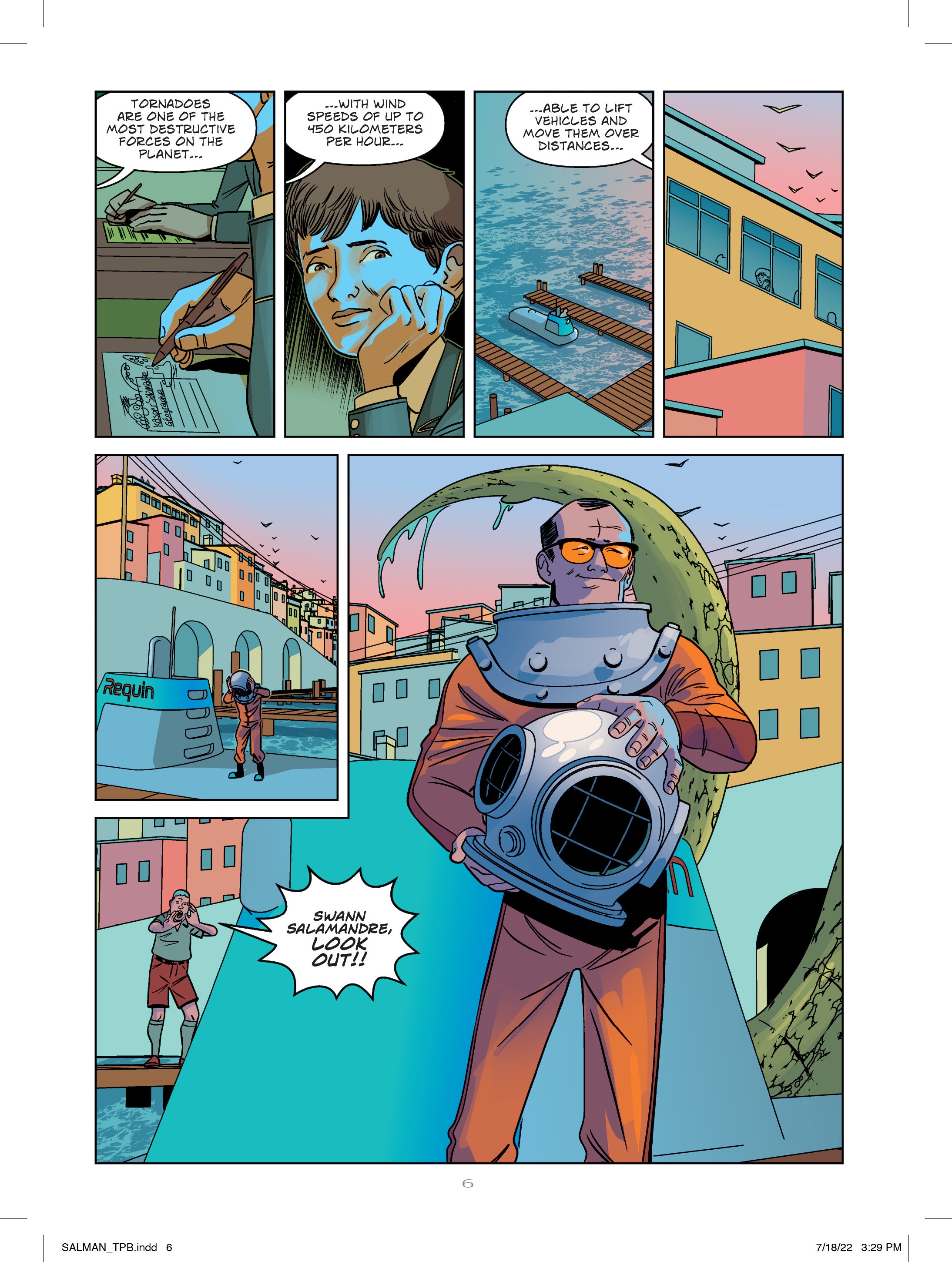
“We meet Kasper’s father, Swann Salamandre, who is based on my own father. My parents divorced when I was quite young, and I only ever heard tall tales about him as I was growing up so the version you see here is very much the embodiment of tall tales. There are really only two characters based directly on people I knew in this book, three if you count me. The rest are either amalgamations of various people I’ve encountered over the course of my life or entirely fictitious.”
“I wanted this to be a small coastal community, so I looked at a lot of Mediterranean coastal towns for inspiration. The statue is that of a saint, likely the St. Nicolas after whom the body of water he gazes out upon takes its name. I figured that the religion of this story world might concern itself more with the stories of saints.”
Salamandre Page 7
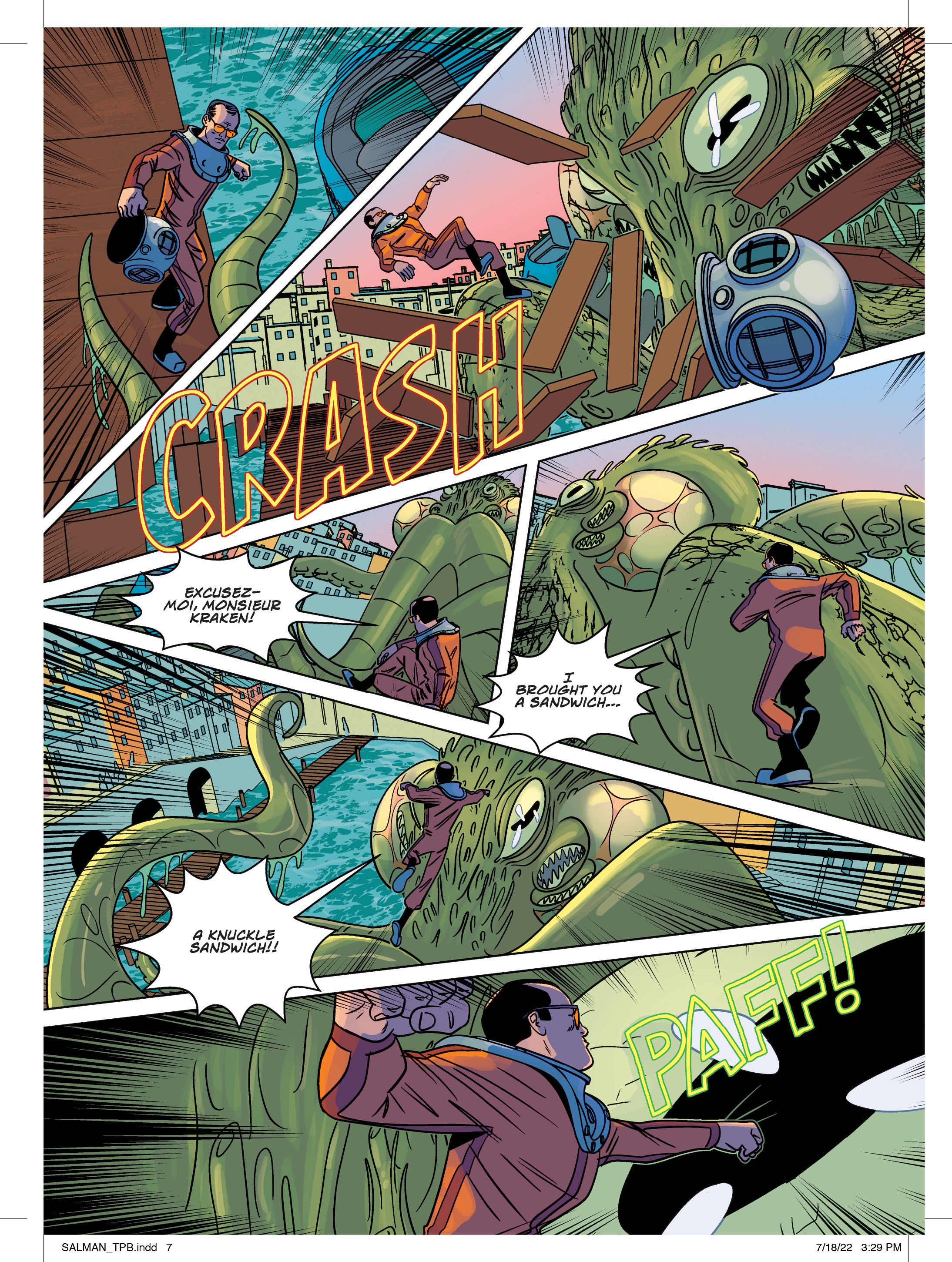
Salamandre Page 8
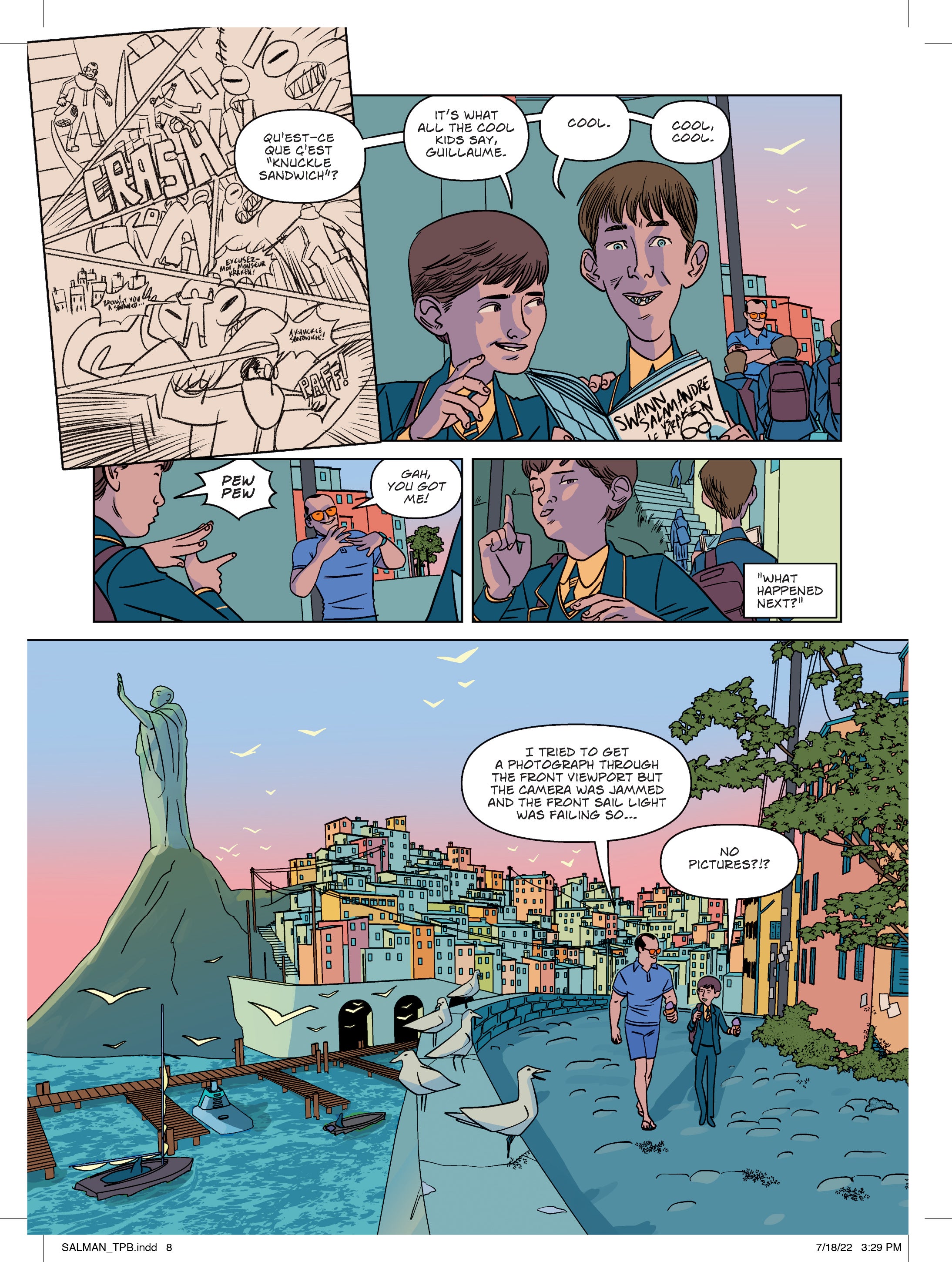
Salamandre Page 9
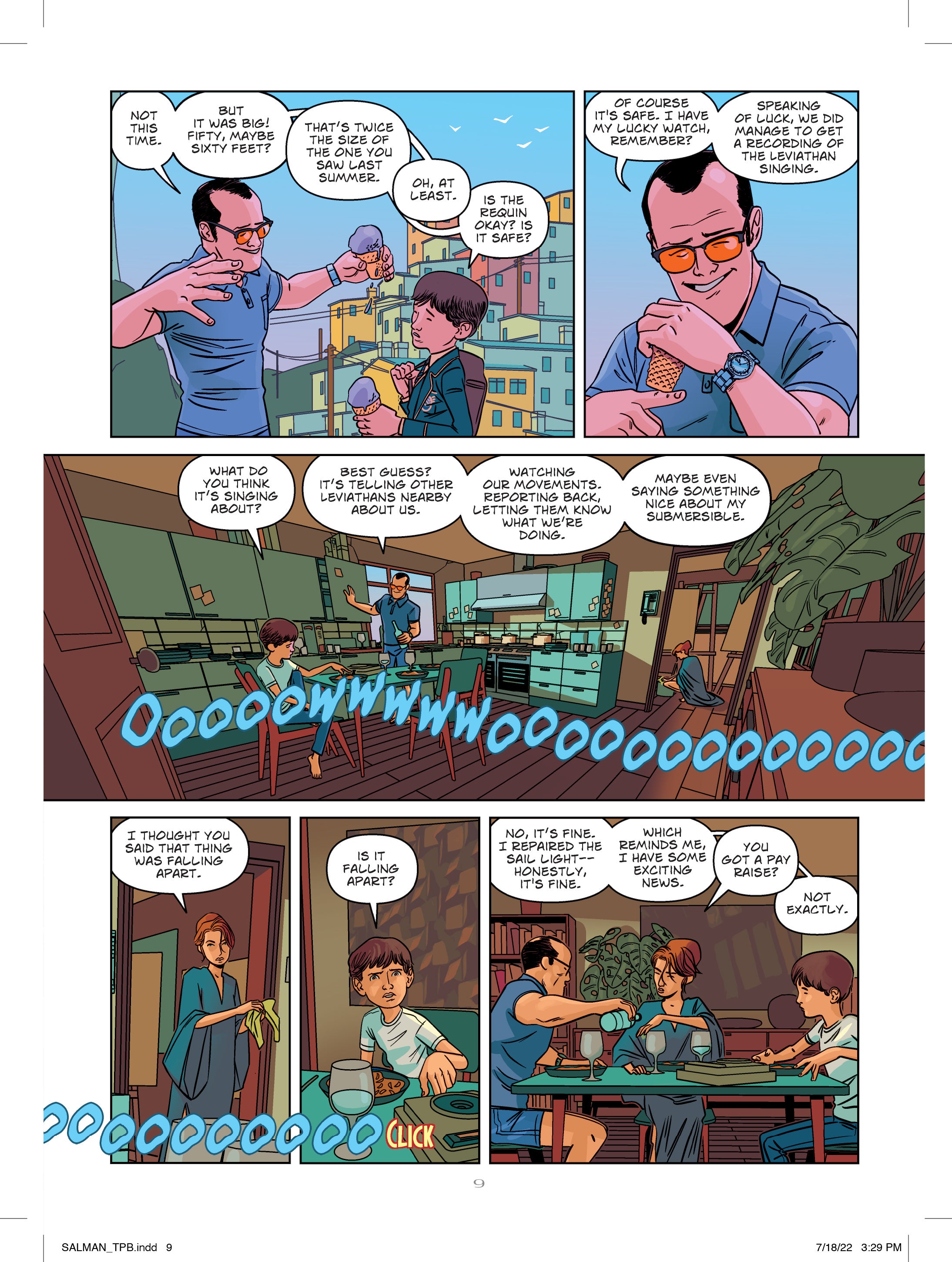
“Here I close in on Kasper’s reaction. I could have cut to the mother and father speaking but it was more important to me that we see Kasper’s reaction to his parents’ interaction. In the dialogue there are very real ramifications being discussed alongside Kasper’s own perspective. Adventure meets reality. We might well be in some misremembered past, but real things happen here.”
Salamandre Page 10
